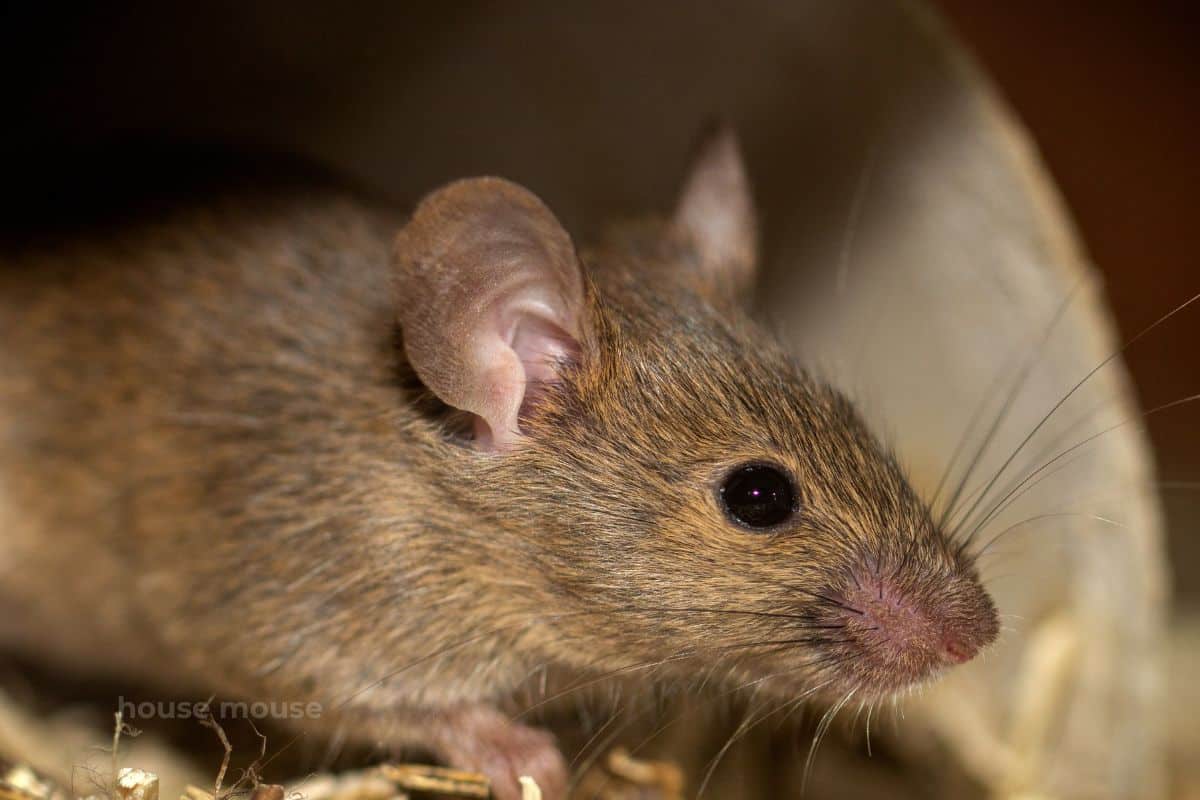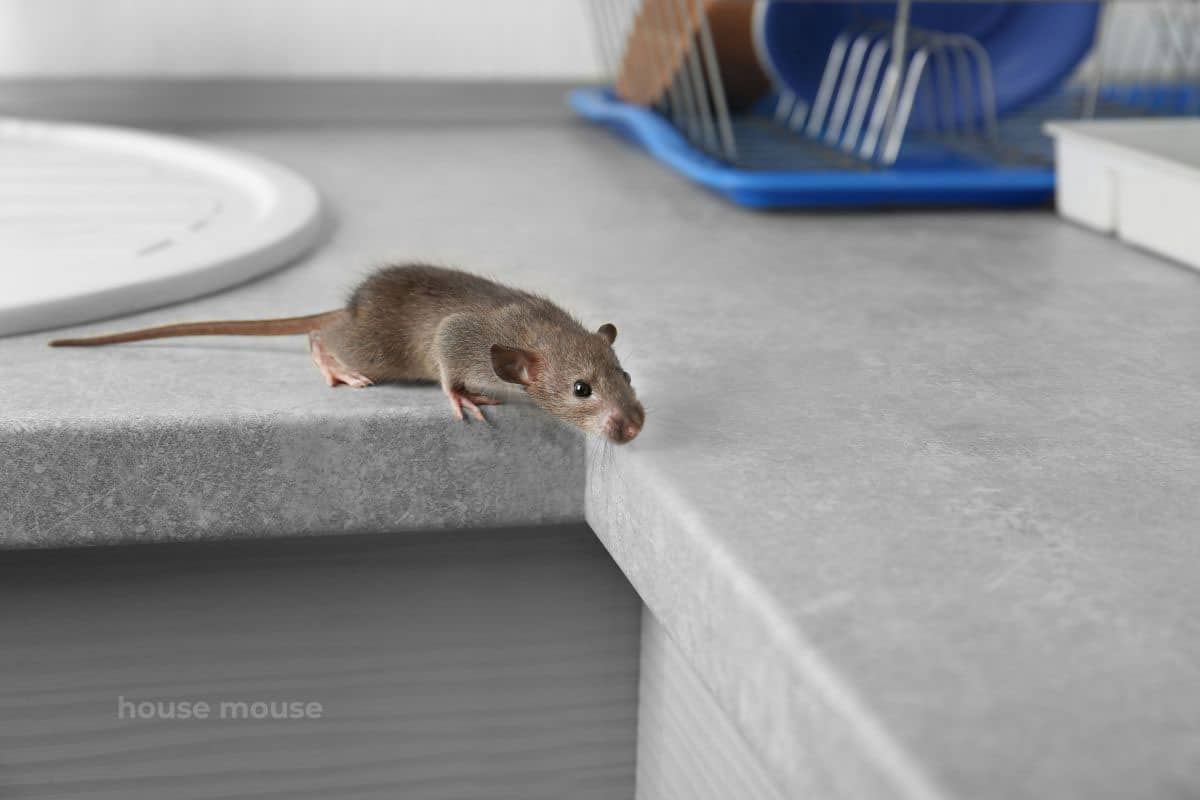This page may contain affiliate links. If you click and buy, we might get a small commission at no cost to you.
If you’ve ever heard strange sounds in the kitchen after dark or found a snapped trap before sunrise, you’ve probably wondered—what time do mice come out at night?
Most mice become active between 10 p.m. and 4 a.m., especially in the quietest, darkest parts of the night. But it’s not just about the time on the clock. Mice are cautious creatures, and they wait until they sense the coast is clear.
When we were dealing with mice in our house, the traps we set almost always went off within the first hour of going to bed. As soon as the lights were out and the house was quiet, you could practically set your watch by it. That’s when they’d creep out and start exploring.
These are the no-kill mousetraps we’ve used and they work great. A little bit of peanut butter and cracker inside them is all that’s needed. You get a pack of 4 and they are dead simple to use.
Article highlights
- Most mice come out between 10 p.m. and 4 a.m., when the house is quiet and dark
- They often emerge from walls, floors, or hidden entry points from outside
- Mice come inside for food, warmth, and shelter, especially during colder months
- Preventing mice starts with sealing gaps, removing food sources, and setting traps
When do mice come out at night?
Mice are nocturnal animals, meaning they’re naturally more active at night. But it’s not just nightfall that draws them out—it’s the silence. They wait until your house settles down, lights are off, and movement stops. That’s usually between 10 p.m. and 4 a.m., with a noticeable spike within the first hour or two after bedtime.
In my own experience, I started noticing a pattern. We’d set the traps right before bed, and more often than not, we’d hear one snap within an hour. It became clear the mice were just waiting for us to go to sleep. No lights. No footsteps. No threat. That’s their green light.
Where are mice coming from?
Inside the walls
Mice often move through wall voids using gaps around plumbing, electrical wiring, or baseboards. You might never see the hole they’re using, but they can squeeze through spaces the size of a dime and travel quietly between floors or rooms.
These interior wall spaces give mice protected pathways to explore your home without being seen. They’ll often chew through drywall or insulation to create hidden tunnels, especially behind kitchen cabinets or under sinks. If you hear scratching or rustling sounds in the walls at night, that’s usually a sign they’ve made these voids their highway.

Is that what I hear scratching in the walls?
Yes—if you’re hearing faint scratching, gnawing, or movement inside the walls late at night, mice are a likely culprit. These sounds tend to be most noticeable when the house is quiet, often just after everyone has gone to bed.
Mice are surprisingly active and agile, able to climb vertical surfaces and squeeze through tight spaces. The noises you hear are often them running along beams, chewing through insulation, or creating nesting spaces.
If the sounds are persistent in a specific area, it’s a good indication of where they’re nesting or traveling most frequently. And if the noises suddenly stop and you’re left with a foul smell, here’s how to get rid of a dead mouse when you can’t find it.
Under floors and cabinets
Floors, subfloors, and hollow cabinet bases offer warm, undisturbed spaces where mice can nest and hide during the day. They often enter through utility openings or gaps where flooring meets the wall, then travel beneath your feet to access food sources.
In the kitchen, areas under the stove, refrigerator, or dishwasher are common hiding spots. These places provide cover and often trap food scraps, making them attractive both for shelter and easy meals. If droppings appear near appliances, chances are they’re coming from somewhere underneath or behind them.

From outside
Mice often enter from the outdoors through foundation cracks, garage doors, attic vents, or gaps around pipes and wires. Even the smallest opening—less than half an inch—is enough for a mouse to squeeze through and make its way inside.
Common exterior entry points include dryer vents, gaps in siding, and holes where utility lines enter the home. In colder seasons, they’re especially motivated to find these paths indoors. Sealing up these openings is one of the most effective ways to stop new mice from coming in, especially around the base of the home or in attached garages.
Why do mice come inside?
They’re searching for food
Even tiny crumbs, open boxes of dry goods, or a few pieces of pet kibble can attract mice. They have an excellent sense of smell and will return to any spot where food is reliably available.

Mice don’t need a full meal to survive—just trace amounts of food left behind can keep them coming back night after night. They’ll scavenge behind your stove, under the fridge, or anywhere crumbs tend to collect. Open trash cans, dirty dishes, or pantry shelves with spills are also common targets. Once they find a spot that consistently feeds them, they’ll stay close.
They need warmth and shelter
Especially in colder months, your home offers a consistent temperature, protection from predators, and plenty of nesting spots in wall voids, insulation, or storage boxes.
Outdoors, mice are exposed to harsh conditions, unpredictable weather, and natural predators. Inside, they can stay warm all winter long without needing to search far for safety. They often seek out areas near heat sources like hot water heaters, furnaces, or kitchen appliances. As long as they stay hidden, your home becomes the ideal refuge.
They’re looking for a safe place to breed
Indoors is a perfect environment for mice to raise their young. Once one mouse finds a safe nesting spot, it’s only a matter of time before the population grows.
Female mice can give birth as often as every three weeks and have up to a dozen pups per litter. When nesting inside your home, they’re shielded from predators and rarely disturbed. That allows them to reproduce quickly, and even a small, unnoticed mouse population can explode in a matter of months if nothing is done.
How to prevent mice from coming out at night
- Seal entry points: Look for holes along baseboards, behind appliances, or near pipes. Use steel wool and caulk to block them effectively.
- Cut off food access: Store food in airtight containers, sweep floors daily, and avoid leaving pet food out overnight.
- Set traps strategically: Place them along walls, behind the stove or microwave, and in areas where droppings have been found.
- Declutter nesting areas: Clean up basements, garages, and storage spaces where mice might hide.
The bottom line
Most mice come out between 10 p.m. and 4 a.m., usually as soon as your house goes quiet. They wait until they sense it’s safe, when the lights are off, the noise is gone, and nothing’s moving. That’s when they explore, looking for food and nesting spots.
Understanding their timing and behavior is the first step to stopping them. Once you know when, where, and why mice are coming into your home, you can take small but effective steps to keep them out for good.



